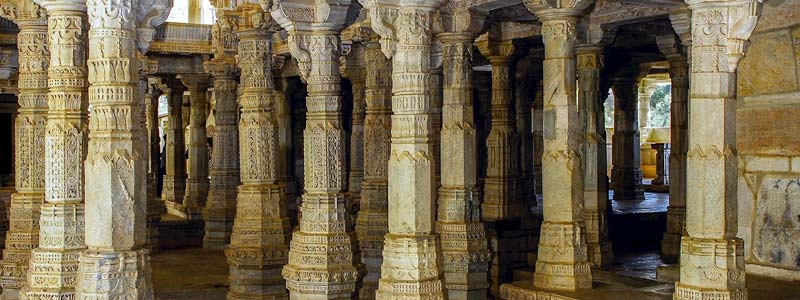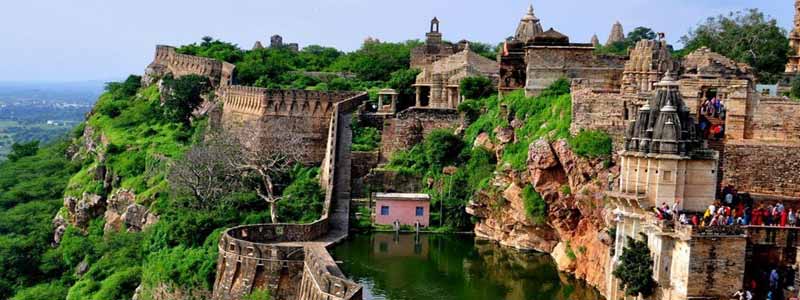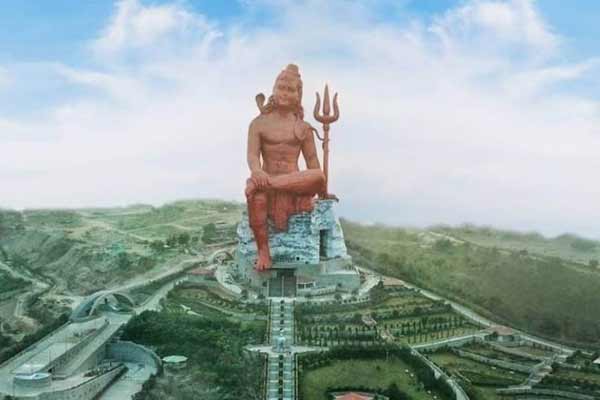Places to Visit in Nathdwara is a small and beautiful town situated between the Aravali hills on the banks of Banas River in Rajsamand district. This town is very popular for its temple of Krishna which houses a deity of Krishna. This temple has a very rich and interesting history behind it which we will come to later. The literal meaning of the word Nathdwara is ‘Gateway to Shreenathji’.
The town is situated at a distance of around 50 km from Udaipur city. Hence, it is the most loved and preferred getaway of the citizens of Udaipur. Shreenathji temple is undoubtedly very beautiful and popular in the town but there are some other beautiful destinations in the town too that can be your next weekend escape.

Ranakpur
Between Jodhpur and Udaipur, Ranakpur is located on the western side of the Aravalli Range. It is a notable Jain Temple and one of the most beautiful sites to visit close to Nathdwara. The Jain Temple is one of the biggest and most significant temples in Jain tradition, with beautiful carvings and distinctive architecture. The Tirthankara Adinatha, the first spiritual leader of Jainism and the founder of the Ikshvaku dynasty, is the subject of the Shwetambar Jain Temple. Ranakpur also has a modest Sun Temple in addition to the Jain Temples Rajasthan Budget Tours.
Traveller Information:
Famous for: Intricate carvings, and unique architecture
Best Time to Visit: In the months of September to February
Duration: 1-2 Hours

Chittorgarh
The Chittor Fort, the biggest Fort in India, is located in Chittorgarh along the banks of the Beach River and Gambhiri River. The North-South-East-East-West Corridor Expressways and the Golden Quadrilateral Highway System provide Chittorgarh with good access to most of the rest of India. Other attractions in Chittorgarh include the Kalika Mata Temple, Vijay Stambh, Kirti Stambh, Rana Kumbha’s Palace, and Rani Padmini’s Palace in addition to the Chittor Fort.
Traveller Information:
Famous for: Aesthetic beauty
Best Time to Visit: In the months of September to February
Duration: 2-3 Hours
Pali
Pali, also known as “Industrial City,” is one of the Nathdwara tourist destinations and is located along the Bandi River. Plan a Day trip to Shri Navlakha Parshwanath Jain Temple, Somnath Mandir, Maharana Pratap Smarak, Lakhotia Garden, and all the Baoris while you are in Pali (step-wells). Along with its many attractions, Pali is well known for its ice cream, kulfi, and gulab halwa. Located 70 km southeast of Jodhpur, Pali is a well-recognized place Places to Visit in Nathdwara.
Traveller Information:
Famous for: Also known as Industrial city
Best Time to Visit: In the months of September to February
Duration: 2-3 Hours
Shrinathji Temple
A Hindu temple in Nathdwara, Rajasthan called Shrinathji Temple is devoted to Shrinathji, one of Lord Krishna’s avatars. It is 48 km away from the lovely city of Udaipur and situated on the banks of the Banas River. The magnificent temple is a well-known Rajasthani pilgrimage site and a must-see if you are doing a tour of Rajasthan’s religious sites. The Shringar of the deity, where the idol is dressed in a new outfit every day, is a prominent feature of the Shrinathji temple in Nathdwara. Devotees travel from all over the world to see the idol in its various guises Places to Visit in Nathdwara.
Traveller Information:
Famous for: Aura of spirituality and Mythological Significance
Best Time to Visit: In the months of September to February
Duration: 2-3 Hours
The Eklingji Temple
The Eklingji Temple is located in the town of Eklingji, not far from the Eklingji Lake. It was built in honor of Eklingji, the primary deity of the Sisodia Dynasty and a manifestation of Lord Shiva. The temple has a pyramidal shape and is supported by a marble and granite foundation. Within the compound is a cenotaph commemorating the former monarch of Mewar, which is renowned for its exquisite carvings and murals and includes an image of Lord Vishnu. Every Monday, there are special pujas done in the temple.
Traveller Information:
Famous for: Aura of spirituality and Mythological Significance
Best Time to Visit: In the months of September to February
Duration: 2-3 Hours
Charbhuja
Charbhuja is a well-known Temple in the city dedicated to Lord Vishnu, the guardian of the Hindu triad, and is situated on the outskirts of the main town of Nathdwara and near to the fort of the Bor Rajputs. The carving on the door panels and the mirror work in the temple depict its enormously sophisticated architecture, which is regarded as the fourth Dham (abode) of Lord Vishnu. Marble, lime mortars, and mirror works make up the majority of the Charbhuja Temple’s construction. On top of that, there are stone elephants flanking the entryway on both sides Places to Visit in Nathdwara.
Traveller Information:
Famous for: Mythological Significance, and intricate architecture
Best Time to Visit: In the months of September to February
Duration: 1-2 Hours
